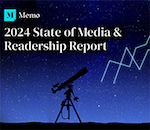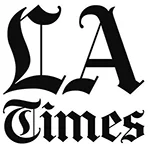A Harvard study released this week shows how the media’s coverage of the 2016 Presidential race may have influenced state primary and caucus results, and particularly, how it played a role in boosting Donald Trump's rise from a low-polling candidate with fringe support to the presumptive Republican nominee.
The report, issued by Harvard University’s research center, The Shorenstein Center on Media, Politics and Public Policy, analyzed the media’s coverage of the leading presidential candidates, particularly during the “invisible primary,” the critical months leading up to the Iowa caucuses and New Hampshire primary when candidates work to rouse voter interest through media coverage.
The study, using data supplied by content analysis firm Media Tenor, collected thousands of news statements regarding the candidates made by eight networks and newspapers — including CBS, Fox News, the LA Times, NBC, the New York Times, USA Today, the Wall Street Journal and the Washington Post — and analyzed the positive, neutral or negative sentiment associated with each statement.
The study shows that the media’s obsessive coverage of Trump during this period easily outweighed coverage given to other Republican candidates. Equating media coverage time to the amount candidates would have spent on ad buys in those outlets, the study concluded that Trump earned about $55 million in exposure, far surpassing fellow Republican party hopefuls. Jeb Bush took a distant second at $36 million, and Marco Rubio took in $34 million while Ted Cruz took in $32.5 million. Ben Carson and John Kasich rounded out last-place, at $24 million and $16 million, respectively.
Even more puzzling, an overwhelming amount of the sentiment garnered toward Trump during this period was positive, with many of these laudatory statements made in the months predating Trump’s rise in the polls, according to report author Thomas Patterson, who is Harvard’s Bradley Professor of Government and the Press.
Each of the eight outlets analyzed in the study supplied coverage of Trump that was more often positive or neutral in tone than negative. USA Today delivered positive or neutral coverage of Trump 74 percent of the time, and Fox News came in a close second, with 73 percent, while the Los Angeles Times took third, at 71 percent. Even the New York Times, which ranked the lowest outlet on the list for dolling out favorable Trump coverage, still gave him positive or neutral sentiment 63 percent of the time. Bush, by contrast, received negative coverage averaging 70 percent by December, accounting for the most negative coverage given to any of the leading Republican candidates in the months leading up to the polls.
Patterson’s report surmised that “Trump is arguably the first bona fide media-created presidential nominee. Although he subsequently tapped a political nerve, journalists fueled his launch.”
Overall, the 2016 Democratic candidates received less than half the media coverage allotted to the Republican contenders. In the Democratic camp, the report claims Hillary Clinton received a sizeable amount of coverage — about three times more media coverage than Bernie Sanders, even though the latter had amassed historic donations and a groundswell of grassroots support. However, an overwhelming amount of the coverage Clinton did receive was negative in tone. According to the study, Clinton received negative coverage from the eight outlets polled 84 percent of the time, more negative coverage than any other top candidate from either political party. Clinton was also the only candidate whose policy platform resulted in an unfavorable balance of coverage, according to Patterson’s report.
Noting the disparity in sentiment, Patterson said that “whereas media coverage helped build up Trump, it helped tear down Clinton. Trump’s positive coverage was the equivalent of millions of dollars in ad-buys in his favor, whereas Clinton’s negative coverage can be equated to millions of dollars in attack ads, with her on the receiving end.”
Bernie Sanders, by contrast, despite his populist popularity and rise to become a tenable threat to Clinton’s candidacy, was virtually ignored by the media in the months leading up to the first caucuses and primary. Not only did coverage of Trump and Clinton grossly overshadow Sanders during this time, the five top Republican candidates after Trump also initially received more media attention than Sanders, which may confirm complaints from many in that politico's camp regarding a supposed "media blackout" of his campaign. Coverage of Sanders picked up as a result of several heated debate performances, however, and the coverage Sanders did receive was often overwhelmingly favorable in tone. In fact, the report found Sanders received more coverage bearing positive sentiment than any other candidate from either party.
"Sanders struggled to get badly needed press attention in the early going," Patterson’s report read. "Less coverage of the Democratic side worked against Bernie Sanders’ efforts to make inroads on Clinton’s support."


 Trump Media & Technology Group today reported a $58.2M net loss on $4.1M in 2023 revenues, a disclosure that drove its stock price down 22.6 percent to $47.96.
Trump Media & Technology Group today reported a $58.2M net loss on $4.1M in 2023 revenues, a disclosure that drove its stock price down 22.6 percent to $47.96. Barry Pollack, an attorney at Wall Street’s Harris St. Laurent & Wechsler, has registered Julian Assange as a client with the Justice Dept. “out of an abundance of caution.”
Barry Pollack, an attorney at Wall Street’s Harris St. Laurent & Wechsler, has registered Julian Assange as a client with the Justice Dept. “out of an abundance of caution.” Paramount Global to slash 800 jobs in what chief executive Bob Bakish calls part of an effort to “return the company to earnings growth"... Rolling Stone editor-in-chief Noah Shachtman is exiting at the end of the month due to disagreements with chief executive Gus Wenner over the direction the magazine is taking... The New York Times broke the $1 billion barrier in annual revenue from digital subscriptions in 2023... Press Forward is investing more than $500 million to strengthen local newsrooms.
Paramount Global to slash 800 jobs in what chief executive Bob Bakish calls part of an effort to “return the company to earnings growth"... Rolling Stone editor-in-chief Noah Shachtman is exiting at the end of the month due to disagreements with chief executive Gus Wenner over the direction the magazine is taking... The New York Times broke the $1 billion barrier in annual revenue from digital subscriptions in 2023... Press Forward is investing more than $500 million to strengthen local newsrooms. The majority of news articles are read within the first three days of publication, according to a recent report.
The majority of news articles are read within the first three days of publication, according to a recent report. The Los Angeles Times gives pink slips to 115 people or 20 percent of its newsroom staff... TIME is also laying off about 30 employees, which is approximately 15 percent of its editorial staff... The Baltimore Banner, which was launched by Stewart Bainum in 2022 after he failed to buy the Baltimore Sun, added 500 subscribers per day in the three days following Sinclair Broadcast Group's deal to purchase the Sun.
The Los Angeles Times gives pink slips to 115 people or 20 percent of its newsroom staff... TIME is also laying off about 30 employees, which is approximately 15 percent of its editorial staff... The Baltimore Banner, which was launched by Stewart Bainum in 2022 after he failed to buy the Baltimore Sun, added 500 subscribers per day in the three days following Sinclair Broadcast Group's deal to purchase the Sun.


 Have a comment? Send it to
Have a comment? Send it to 
No comments have been submitted for this story yet.